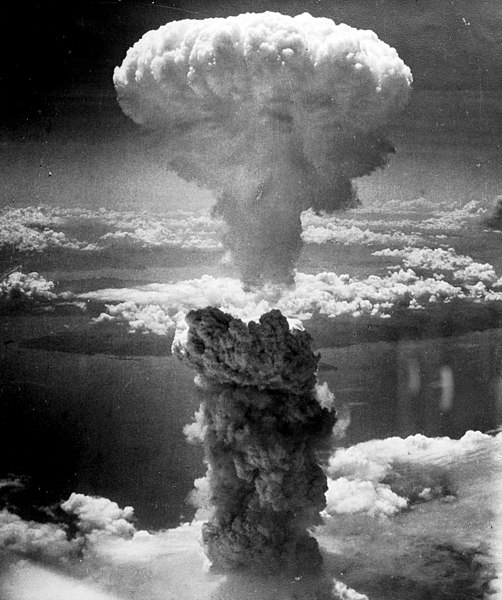End of World War II in Asia
World War II officially ended in Asia on September 2, 1945, with the surrender of Japan on the USS Missouri. Before that, the United States dropped two atomic bombs on Japan, and the Soviet Union declared war on Japan, causing Emperor Hirohito to announce the acceptance of the Potsdam Declaration on August 15, 1945, which would eventually lead to the surrender ceremony on September 2.
From left to right: Clement Attlee, Harry S. Truman, and Joseph Stalin at the Potsdam Conference.
Atomic cloud over Hiroshima after "Little Boy" is dropped on the city
Minister of Foreign Affairs Mamoru Shigemitsu signs the instrument of surrender on USS Missouri in Tokyo Bay on September 2, 1945.
Generalissimo Chiang Kai-shek, March 1945
World War II or the Second World War was a global conflict between two major alliances: the Allies and the Axis powers. The vast majority of the world's countries, including all the great powers, fought as part of these military alliances. Many participating countries invested all available economic, industrial, and scientific capabilities into the war, blurring the distinction between civilian and military resources. Aircraft played a major role, enabling the strategic bombing of population centres and delivery of the only two nuclear weapons ever used in war. It was by far the deadliest conflict in history, resulting in 70–85 million fatalities. Millions died due to genocides, including the Holocaust, as well as starvation, massacres, and disease. In the wake of Axis defeat, Germany, Austria, and Japan were occupied, and war crime tribunals were conducted against German and Japanese leaders.
Image: Bundesarchiv Bild 101I 646 5188 17, Flugzeuge Junkers Ju 87
Image: Matilda tanks on the move outside the perimeter of Tobruk, Libya, 18 November 1941. E6600
Image: Nagasakibomb
Image: Bundesarchiv Bild 183 R76619, Russland, Kesselschlacht Stalingrad








